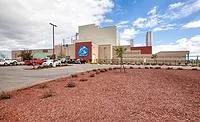TECH FLASH
Reduce confusion around flexibility, adaptability and changeover to maximize impact
The best way to prevent any confusion is to ensure all parties work from a common understanding of these terms.
These issues led to an important discussion at the most recent Top to Top Meeting hosted by PMMI, The Association for Packaging and Processing. Among the association’s board members and technical professionals from a variety of CPGs, much of the conversation revolved around the fact there is no common agreement on the definition of flexibility, adaptability and changeover. While the design elements are very much linked, manufacturing professionals have unique, context-driven understandings of each of these terms. This inconsistency can create opportunities for a misalignment of expectations between suppliers and end-users.
The best way to prevent any confusion around expectations is to ensure all parties work from a common understanding of these terms. Participants in the Top to Top Meeting set out to do just that, assigning definitions to each of these terms, so OEMs and CPGs can apply them in their planning. They are:
•Flexibility: The ability to operate through a whole range of product volumes and package sizes
•Adaptability: The capacity to redeploy, add on or reconfigure a product line
•Changeover: A planned switch from running one product to another. Ideally, changeovers can be done quickly, easily and without tools.
While setting the parameters for each term is a good start, industry players must take additional measures to ensure an alignment of expectations before implementing modular, tool-less and rapid changeover protocols. It is critical that both OEMs and food manufacturers clearly communicate about equipment performance goals. And, both parties should understand how the complicated mechanisms that make equipment more flexible and adaptable can impact OEE line evaluations.
To have the most effective partnership, CPGs and OEMs must clarify expectations—especially as they relate to the understanding of specific terms—before embarking on new projects. For example, an OEM may interpret flexibility as a machine’s ability to run a range of packaging sizes for a single product, while the customer interprets flexibility as a machine’s ability to run a wide variety of products. Clear communication will prevent delays as they work to align equipment capabilities with expectations.
The understanding of what a line is supposed to do and what it might be expected to do in the future is also essential at the onset of a project. Adaptability and flexibility are predicated on understanding future needs, both for the CPG customer that needs to know where business is heading and the OEM that wants to propose, design and help implement the right solutions. Then, if the manufacturer calls for a machine that can eventually be employed for other packaging sizes or a variety of products, the OEM will be able to come up with a solution that meets the customer’s needs.
As flexibility and adaptability increase, so does a system’s complexity. While modular equipment can be a significant asset, there is often a focus on the perceived “negative” aspect; the act of adding or removing components creates operational downtime, detracting from OEE. This perception, however, is not necessarily complete. Rather than lamenting the small amount of time lost during this procedure, manufacturers should focus on the considerable benefits they can enjoy by being able to utilize a single machine that meets the demands of the entire supply chain.
Food manufacturers can seek out the conversations they need to define terms, compare solutions and build supply chain partnerships at PACK EXPO Las Vegas. Combined with Pharma EXPO, the event will offer more than 2,000 processing and packaging solutions providers. The show is expected to attract 30,000 attendees.
Looking for a reprint of this article?
From high-res PDFs to custom plaques, order your copy today!







